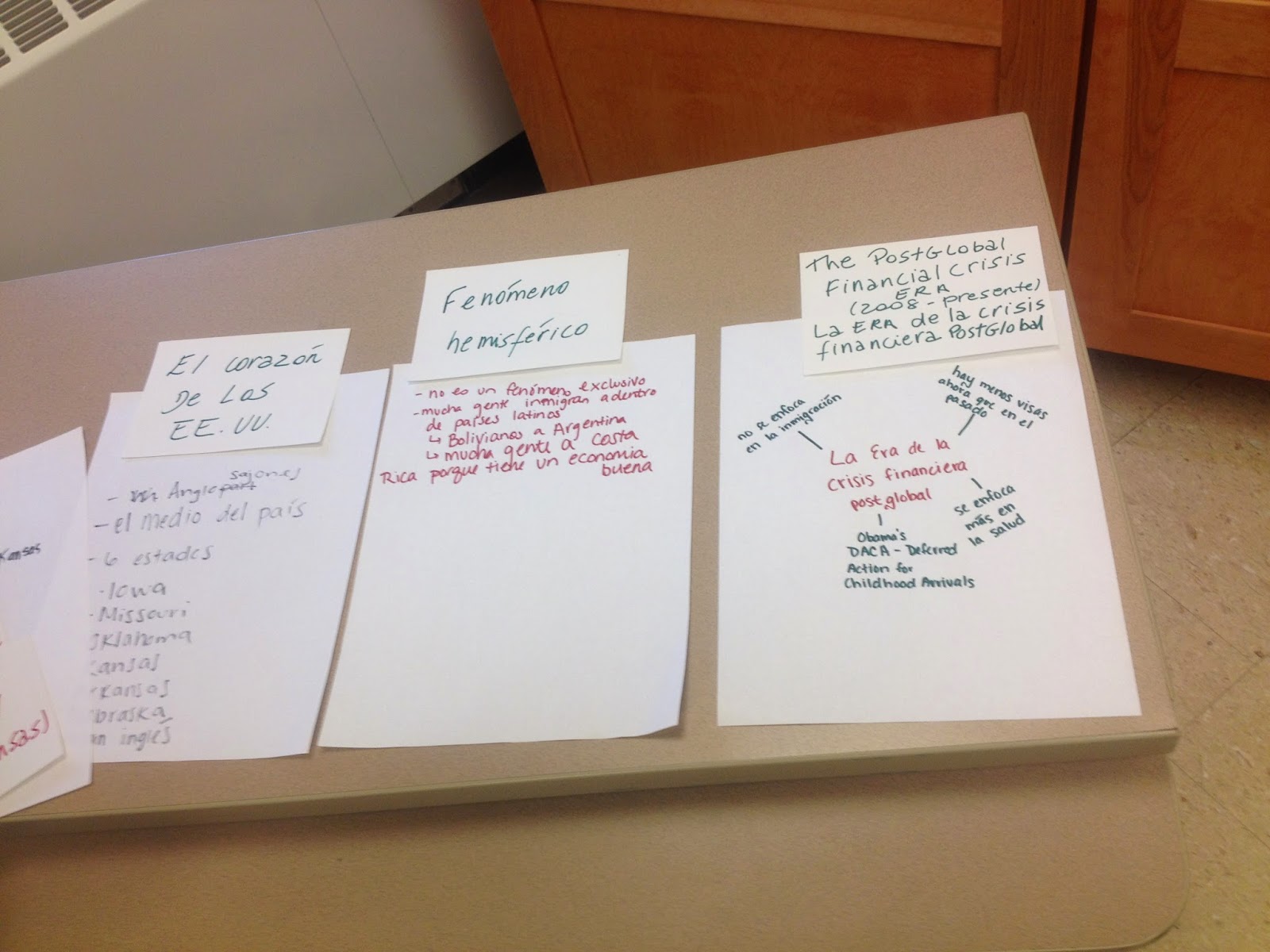Engaging students in collaborative reading: Spanish in the Community class through democratic pedagogy
by Rejane Goncalves Dias
This semester, I teach one section of "Spanish in the Community" and Rejane Goncalves Dias teaches the other. She has taught the course before, she is a PhD student in the College of Education, and she is passionate about community service learning. Below you will find the description of class activity she built around a reading we have students do. Thank you, Rejane, for your creativity, energy, research, and commitment to Spanish community service learning. --Ann Abbott
Collaborative reading helps students to use comprehension
strategies while working cooperatively. Both of these aspects were highlighted
when students worked together on their Lectura Académica: Latin AmericanMigrations to the U.S. Heartland. Changing Social Landscapes in Middle America”(Allegro & Wood, 2013). Collaborative reading was used for two reasons:
1. - I wanted
students to get a deep understanding of Allegro & Wood’s (2013) insightful
discussions of issues related to the migrant Latino population in Mid U.S. over
the years.
2. - Although
the article was in English, it was long and dense; and our 50-minute class
discussion would be in Spanish.
So, how did the collaborative reading work?
- Students had skimmed through the reading prior to
coming to class as it was assigned.
In class:
-I spread two sets of index cards across the room (one
with the some of the article’s major subheadings ‘themes’ and another one with
specific ‘topics’ covered under other ‘themes’). The themes and topics in the
index cards were not related to each other.
- I told students that there were some cards referring to
major themes in the article and other cards referring to specific topics under
other themes discussed in the text.
-I supplied them with paper and colored markers.
-Their task was to work with partners or in groups
identifying the cards that referred to the themes and which ones referred to
specific topics. They walked around the room negotiating their understanding in
Spanish and deciding how they wanted to organize these cards and present their
findings. During the activity, they were also checking their printed or online
versions of the article for confirmation. (There was a dynamic
Spanish(oral)-English(written) interaction going on!)
-After they had finished organizing all the cards, I then
reviewed the article with the whole class based on this display.
 Students were so engaged with the text and the task, that
only at the end of the activity, they realized that all the cards written in
green were major themes and the ones in red ink were topics!
Students were so engaged with the text and the task, that
only at the end of the activity, they realized that all the cards written in
green were major themes and the ones in red ink were topics!
Students shared that this activity has helped them to gain a better understanding of migrant Latinos contributions to the country and the injustices this population has faced due to complicated political reforms.






Comments
Post a Comment